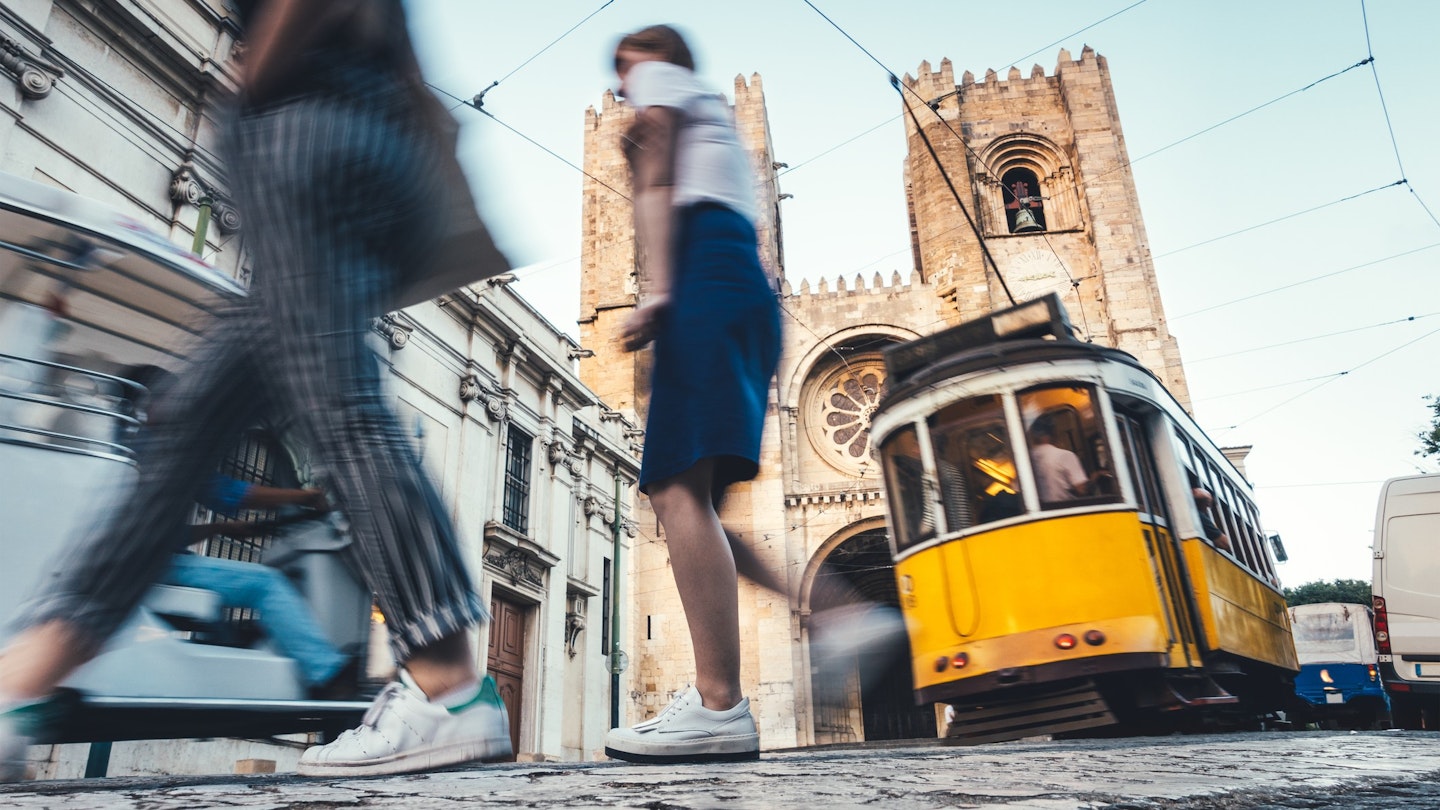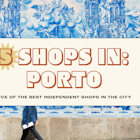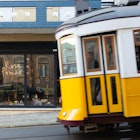Nestled between Spain and the Atlantic Ocean, Portugal is a compact country that you could fit into a two-week road trip.
Contrasting with its small size is the country's diverse culture, cuisine and landscapes that range from the rugged coast in the west to the mountainous inland and from the cool and lush north to the flat and sunny south. Ancient Roman, Celtic and Islamic influences have shaped the customs and language of this land that's officially been a country for more than 870 years – one of the oldest in the world.
This list of the best things to do in Portugal caters to foodies, outdoorsy adventure seekers, culture and history buffs, and travelers who want to take it all in at once, hopping from one must-see to the next.

1. Listen to a live fado performance in Lisbon
Fado, a musical genre started in Portugal that's on UNESCO's Intangible Cultural Heritage of Humanity list, envelops listeners in melancholic, sorrowful and heartfelt music. Slow, lingering songs are sung to the sound of guitarra Portuguesa (Portuguese guitar) and other string instruments.
To experience it for yourself, head to a casa de fado in Lisbon. Popular options include Parreirinha de Alfama or A Baiuca in Alfama and Adega Machado or Café Luso in Bairro Alto. Whichever you choose, all offer a chance to see a live performance, and some even pair the music with a traditional Portuguese dinner.
Planning tip: For more range and diversity, visit Lisbon in late September to attend Santa Casa Alfama, the two-day music festival dedicated entirely to fado.
2. See prehistoric rock art at Vale do Côa
A UNESCO World Heritage site since 1998, the prehistoric rock art site in Vale do Côa, together with nearby Siega Verde in Spain, is the most noteworthy Paleolithic art site in the Iberian Peninsula.
Planning tip: Head to the Museu do Côa first before joining a guided tour of the archaeological site and open-air rock art gallery, which includes more than 1000 rock engravings from the Paleolithic and Iron Age periods scattered around 80 identified sites.

3. Indulge in conventual sweets
Egg yolks, sugar and occasionally almonds are the core ingredients of typical Portuguese pastries known as conventual sweets. Cloistered nuns and monks (hence the name "conventual") created these concoctions, making use of extra egg yolks (the whites were exported and used in winemaking) and newly imported sugar from Brazil in the 15th century, and they were initially for the monastery residents' consumption. But in the 19th century, when religious orders were all to be dissolved, these sweet creations became their only source of income as convents and monasteries were forced to stop taking in novices.
Each region of Portugal has its traditional conventual sweet, with some local or seasonal ingredients thrown in the mix, such as beans in the pastel de feijão in Torres Vedras or the paper-thin, wafer-encased ovos moles in Aveiro. Pastel de nata custard tarts are Lisbon's most famous conventual sweet and also the one that's seen the most variations, including vegan alternatives.
4. Party at Santos Populares, local saints' festivals
Traditional or popular saints' festivities (Santos Populares) happen all over Portugal in June, but St Anthony's in Lisbon (on June 13) and St John's in Porto (on June 24) are the best-known. In these cities' historical neighborhoods, locals hang colorful ribbons across the narrow cobblestoned streets and set up charcoal grills to cook sardines and pork steaks, preferably washed down with a cold local beer or house wine. These festivals started as a way to honor the communities' patron saints, but nowadays, it's the perfect excuse to meet local residents, share a meal and dance the night away.

5. Surf (or watch) the giant waves in Nazaré
The giant Atlantic waves that roll in during Nazaré's rough winters were no secret to local surfers and fishers, but when North American surfer Garrett McNamara established a new World Record by riding a 24m (78ft) wave in 2011, the former fishing village on Portugal's west coast jumped to international fame. Giant wave surfing has become one of Nazaré's calling cards, and the view from the lighthouse of São Miguel Arcanjo Fort is one of the most photographed in town.
6. Stargaze at Great Lake Alqueva
With cloudless skies most of the year and little light pollution, the artificial Great Lake Alqueva in Alentejo is one of Portugal's most perfect spots for stargazing. These extraordinary conditions made the lake the first official starlight tourism destination in the world, as certified by Spanish-based Fundación Starlight. Several local companies offer stargazing and nighttime tours of the lake, and budding astronomers can also visit the observatory.
Planning tip: Prebooking is required, although admission is free for kids under eight, with scheduled starry observations happening during the day or at night.

7. Celebrate Carnaval
For three days before Ash Wednesday, in February or early March, kids and grownups dress up in costumes and participate in Carnaval parades and celebrations happening all over Portugal. Carnaval is often referred to locally as the Portuguese version of Halloween. The first celebrations can be traced back to the 13th century when some of ancient Rome's pagan festivities were appropriated by the Catholic Church. Nearly every town around Portugal hosts a Carnaval parade on Fat Tuesday (the last day of Carnaval), but some are more iconic than others. Torres Vedras, Ovar and Loulé are home to the best Carnaval celebrations, and they mix local traditions with Brazilian-inspired samba parades.
Planning tip: Can't be there for Fat Tuesday? There's an alternative. In Podence, a small village in Portugal's northwest, Carnaval is celebrated differently from the rest of the country – here, it's a unique end-of-winter celebration that inherited the pagan traditions of former Celtic settlers and is part of UNESCO's Intangible Cultural Heritage list. Villagers take part in the Caretos (masked men) parade, and they cover their faces with handmade tin or leather masks depicting a demon-like figure and wear cowbells around their waists.
8. Stay in a traditional schist village
Once located at the crossroads of important commercial routes, the mountain villages between Coimbra and Castelo Branco were practically deserted in the mid-20th century as locals migrated elsewhere in Europe. The dark schist stones used to build the houses were not only unique to the center of Portugal but also became one of the region's calling cards.
To revive this piece of the country's cultural and heritage legacy, the Aldeias do Xisto project was born, transforming 27 villages into rural tourism areas surrounded by rugged mountains, lakes and riverine beaches. The black-stone houses' traditional design was kept to honor and maintain the region's cultural identity.
Planning tip: From nature hikes and wellness retreats to traditional cuisine tastings, book your local experiences at these villages in advance.

9. Taste Portuguese wine
Portugal is home to the well-known wine regions of Alentejo (which produces bold and hearty reds) and Douro (the home of port), but you can find wineries and vineyards practically all over the country, including on the Azores and Madeira archipelagoes.
Planning tip: The region of Vinho Verde (meaning young wine) in Minho produces unique wine from indigenous grape varietals, making it the most authentically Portuguese wine of all. One of the best wineries in the region to taste these fresh, fruity and floral wines (red or white) is Quinta da Aveleda.
10. Road trip on Estrada Nacional 2
Connecting Chaves in the north to Faro in the south, the picturesque Estrada Nacional 2 is a 740km (460-mile) stretch of road that shows road-trippers the kind of Portugal they'd miss if they stuck to highways and freeways. Dubbed the "Portuguese Route 66," the secondary N2 road is seeing a touristic revival as locals are rediscovering Portugal's longest road.
Witness the change of scenery as you drive, from the twists and turns of the road as it cuts through the mountains in Portugal's north and center to the almost-treeless plains of Alentejo and the golden sand beaches of the Algarve. Take time to visit landmarks along the way or stay for a little longer in each town, experiencing community life and local cuisine. Be adventurous and see where the road takes you, or follow one of two pre-designed routes: one dedicated to castles and the other to museums.
.jpg?w=64&h=64&fit=crop&crop=faces&auto=format&q=75)











